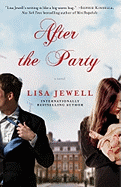
| Publisher: | Atria | |
| Genre: | Fiction, Contemporary Women, Family Life | |
| ISBN: | 9781451609103 | |
| Pub Date: | August 2011 | |
| Price: | $15 |
| Fiction |
by Lisa Jewell
Lisa Jewell's fans will be delighted with this long-awaited sequel to Ralph's Party, an engrossing novel in its own right even if you didn't read the previous work.
After the Party picks up where most romances leave off, delving into what happens after you finally find the one, cohabitate and have a few babies--showing us protagonists Jem and Ralph 11 years after the romantic payoff that ended Ralph's Party.
Gone are the dizzying smooches, long painting sessions and fun jalapeño-tasting contests. Jem is now obsessed with being a mom, while a rejected Ralph smokes his days away, pouting about his wife's transition from sexy goddess to nagging battleaxe. Jem, meanwhile, is resentful that the lazy Ralph doesn't seem to care about her career. They both start flirting with other people, and just when Jem escapes by crawling into a bottle, life-long atheist Ralph finds God. And that's when you'll really get interested in Jewell's tale.
Jem and Ralph's story is an exquisite conundrum that's uplifting, relatable and jarringly similar to many modern relationships. Jewell's account reminds us that love may begin with grand romantic gestures but only by putting effort into the unglamorous minutiae of everyday life can love survive, grow and last. --Natalie Papailiou, author of blog MILF: Mother I'd Like to Friend
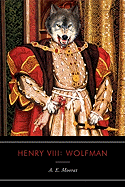
| Publisher: | Pegasus Books | |
| Genre: | Fiction, Fantasy, Historical, Alternative History, Paranormal | |
| ISBN: | 9781605981987 | |
| Pub Date: | August 2011 | |
| Price: | $15.95 |
| Fiction |
by A. E. Moorat
Henry VIII is perhaps best known for having six wives--and disposing of most of them through divorce or execution. However, with the release of A.E. Moorat's new horror novel, Henry VIII is revealed to be... a werewolf. British author Moorat has spent years writing fiction, and his first horror novel was Queen Victoria: Demon Hunter, released in 2010. Henry VIII: Wolfman is something of a follow-up--different time period, same use of royalty and same gory humor.
A secret uprising of "wolfen" is threatening Henry's rule; however, he is protected by a secret society known as the Protektorate. Henry just wants a male heir. The trouble begins when Henry's male heir is eaten by a wolf and Henry is bitten, leading to a tale of vengeance and self-discovery. Does Henry want revenge on the wolves that murdered his child, or does he give in to his own flesh-eating tendencies?
Like Moorat's Queen Victoria, the setting and backstory of Henry VIII is based on fact. We meet such real-life characters as Sir Thomas More and Anne Boleyn. There are royal intrigues, beheadings and plagues. Readers may wonder--What if Henry VIII really had been a werewolf?
Moorat's characters are expertly well-rounded; change--full-moon-related or not--is inevitable. He cleverly mixes grotesque description with comic delivery. If you've ever wondered what a werewolf thinks about, wonder no more. Read Moorat's new release and ask yourself: Am I a sicko for laughing at all the horrid bits? --Sara Dobie, blogger at Wordpress

| Publisher: | Riverhead Books | |
| Genre: | Urban Life, Fiction, Contemporary Women | |
| ISBN: | 9781594488306 | |
| Pub Date: | August 2011 | |
| Price: | $25.95 |
| Fiction |
by Maxine Swann
The Foreigners' narrator, an American named Daisy, moves to Argentina ostensibly to study the city's waterways but ultimately to rediscover herself after her divorce leaves her psychologically adrift. There she befriends an unpredictable Argentine named Leonarda and a polished Austrian named Isolde, two radically different women who are wandering Buenos Aires with the same muddled desire to find themselves.
Daisy finds herself entangled in Leonarda's harebrained schemes and propping up Isolde's disintegrating Euro-artist façade; soon, her plans to study waterways and her post-divorce depression are forgotten. Feeling trapped, she makes a break for Uruguay, only to discover that her true chances of returning to herself lay in Buenos Aires--with or without her new friendships. Meanwhile, Leonarda and Isolde come to some surprising conclusions of their own, as the city pushes each woman toward her own personal metamorphosis.
Astonishing, precise and beautifully written, The Foreigners offers not only a stunning view of Argentine life, but also a literary trip that is neither overplanned nor easily forgotten. --Dani Alexis Ryskamp, blogger at Intractable Bibliophilia
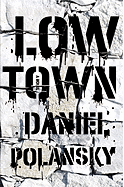
| Publisher: | Doubleday | |
| Genre: | General, Fiction, Fantasy, Thrillers | |
| ISBN: | 9780385534468 | |
| Pub Date: | August 2011 | |
| Price: | $25.95 |
| Science Fiction & Fantasy |
by Daniel Polansky
Picture the Baltimore of The Wire: a city where the criminal subculture has evolved not just into a shadow economy, but a shadow society, flourishing under the surface of official "law and order." This is Low Town, the world of the Warden, a drug dealer who has carved out a bit of territory for himself and will get his hands dirty to protect it, if need be. But the Warden is not just a brutal thug, and when a young girl is kidnapped and murdered in his neighborhood, he decides to hunt down the killer, because he knows how incompetent the city's investigators are--having been one himself before leaving in disgrace.
So far, this sounds like a standard urban thriller, but Daniel Polansky includes a twist: in the dark, swashbuckling fantasy world of Low Town, magic is real. Instead of forensic investigators, for example, the guard has "scryers" who glean psychic impressions off dead bodies. Although the Warden solves the dead girl's murder quickly, it involves a demonic force that causes the law to shut the case down and order him to keep his trap shut. Then another child goes missing, and the guard is back to put the squeeze on the Warden, who will have to see the case all the way through this time.
Polansky's imaginary city has resonances to our world, like the parallels between his Kirentown and a real-life Chinatown. Those help hook the reader into the story, which turns into the type of noir narrative where everything and everyone is tainted by corruption. Meanwhile, solving these murders forces the Warden to confront his old life. spurring its own set of emotional aftershocks. Polansky writes with a steadfast commitment to the downbeat noir sensibility, while leaving room for a sequel if readers' interest warrants. --Ron Hogan, founder of Beatrice.com

| Publisher: | W.W. Norton | |
| Genre: | Sociology of Religion, History, Social Science, Religion | |
| ISBN: | 9780393079630 | |
| Pub Date: | August 2011 | |
| Price: | $24.95 |
| Nonfiction |
by Jeff Sharlet
Jeff Sharlet rose to prominence in political media circles as the author of The Family and C Street, two books that probed the intersection of American politics and fundamentalist Christianity. He describes the essays collected in Sweet Heaven When I Die as "attempted escapes" from that subculture, but it's far from a clean break. In one chapter, he accompanies members of a youth ministry to a local "hell house," where the evils of secularism are portrayed in graphic detail; another short essay describes Sharlet's encounter with "Vera," a German teenager who found Jesus as an exchange student in Oklahoma, then struggled to find a church in Berlin that spoke to her with the same power. Even a profile of the radical cultural critic Cornel West is distinguished, in this context, by the differences between his self-described "Christocentric" pragmatism and mainstream fundamentalism.
The collection does branch out, though, with compelling portraits of a Yiddish novelist who spent years writing about life in the ghettos of Lodz; a far-left activist murdered by Mexican law enforcement officials while trying to cover political riots; and a New Age healer in post-9/11 New York who's grown rich providing clients with the security of "spiritual health." Sharlet's own journey of discovery is often an integral part of these profiles, and interspersed among them are even more personal reflections, drawing upon his experiences and those of his friends to describe a world where the search for meaning never ends. In the end, he says, it's in not knowing the ultimate answers, in leaving ourselves open to the possibility of change, that we can continue to draw hope. --Ron Hogan, founder of Beatrice.com
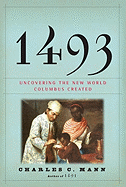
| Publisher: | Knopf | |
| Genre: | United States, Expeditions & Discoveries, History, Americas (North Central South West Indies), Medieval, Colonial Period | |
| ISBN: | 9780307265722 | |
| Pub Date: | August 2011 | |
| Price: | $30.50 |
| Starred | Nonfiction |
by Charles C. Mann
In elementary school we learned that Christopher Columbus landed on the Caribbean island of Hispaniola in 1492, stage one in his plan to find a western route to China. In this landmark book, Charles Mann (1491: New Revelations of the Americas before Columbus) refreshes, corrects and amplifies our long-ago memories of those lessons. Columbus's voyage was about more than an alternative route--it changed the world; here, Mann focuses on the ecological and economic changes.
Trade in tobacco and silver was the spur for the "Columbia Exchange," yet it involved more: large domesticated animals arrived in North America; common nightcrawlers, red march worms and bees, not seen on the American continent since the Ice Age, arrived in Virginia; mosquitoes that carried malaria and yellow fever were brought in from Africa; and so on. As scientist Cindy Hale told Mann, "Four centuries ago, we launched this gigantic unplanned ecological experiment. We have no idea what the long-term consequences will be."
Though we can't predict how the experiment will end, Mann's stories of what we have learned so far will rivet readers. Consider his statement: "The industrial revolution depends on three raw materials: steel, fossil fuels, and rubber. If one member of that triad suddenly vanished, it would have unwelcome effect."
1493 bristles with insights like this. African sweet potatoes averted a food crisis in China, introduction of potatoes from the Andes had the same effect in Europe, and something called the "Duffy antigen" played a critical role in the slave trade. Mann portrays Mexico City as "a troubled, teeming, polyglot metropolis with an opulent center and seething ethnic neighborhoods... that is struggling to fend off ecological disaster" and sees it as the world's first 21st-century city, although it was already that way in 1642. Setting sail for China, Columbus started it all. --John McFarland, author
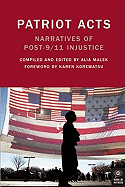
| Publisher: | Voice of Witness/McSweeney's Books | |
| Genre: | Social Science, Discrimination & Racism | |
| ISBN: | 9781936365371 | |
| Pub Date: | August 2011 | |
| Price: | $24 |
| Nonfiction |
by Alia Malek, editor
Patriot Acts might make your stomach hurt. While nausea isn't normally a book-review highlight, in this case such a visceral response should be counted as a measure of the book’s success. The editor, Alia Malek, is the American-born child of Syrian immigrants and author of A Country Called Amreeka: US History Retold Through Arab American Lives. Her stated goal in Patriot Acts is to give a voice to people whose human rights were violated after 9/11.
The heart of the book is 18 first-hand accounts of what Malek calls "the darker side of the War on Terror." Members of America's Arab, Middle-Eastern, Muslim and South Asian communities, the narrators differ in age, ethnicity, gender and, unexpectedly, religion. Some stories are horribly disturbing: a 16-year-old Muslim girl from West Africa held on suspicion of being a suicide bomber, a young Sikh who lost two brothers to hate crimes. Others are black comedy, like the student detained by TSA because of Arabic-language flashcards and a Lebanese great-grandfather.
What holds these narratives together is the question raised by Sikh business owner Rana Sodhi, whose brother was shot to death because he wore a turban and "looked like the enemy": "How many times can a person be stopped before they feel like they are not seen as American? What does an American look like?" Published 10 years after the September 11 attacks, Patriot Acts is a powerful reminder of the importance--and fragility--of America's civil liberties. --Pamela Toler, blogging at History in the Margins
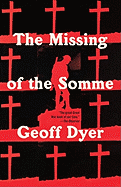
| Publisher: | Vintage | |
| Genre: | Criticism & Theory, Art, History, Military, World War I | |
| ISBN: | 9780307742971 | |
| Pub Date: | August 2011 | |
| Price: | $14.95 |
| Nonfiction |
by Geoff Dyer
There are countless books on World War I, and countless more on the wars following it, but The Missing of the Somme stands out among the crowd because instead of discussing strategy, timelines and numbers of the war, author Geoff Dyer (But Beautiful; Out of Sheer Rage) focuses on the remembrance of World War I.
Though short, Dyer's treatise is incredibly thorough--he draws on his experience traveling to the cemeteries and monuments across Europe; surviving photographs, films, letters and journals; and his own family history to craft a story about the impact of war on the generations that followed it. In doing so, he covers most, if not all, of the many ways we use both to remember and memorialize the war and the losses in which it resulted. Ultimately, The Missing of the Somme shows us how much our need to commemorate an event is capable of shaping our memories of it, even as the event is still in progress.
Originally published in the U.K. in 1994, this new edition is the first time The Missing of the Somme is being published in the U.S. As we approach the 100th anniversary of the beginning of World War I, and lose the last remaining veterans of the war itself, it proves a timely and important look at both the memory and memorial of the war so terrible as to be named The Great War. --Kerry McHugh, blogger at Entomology of a Bookworm
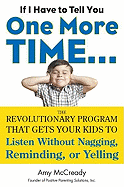
| Publisher: | Tarcher | |
| Genre: | Parenting, Child Rearing, Child Development, Family & Relationships, Discipline | |
| ISBN: | 9781585428649 | |
| Pub Date: | August 2011 | |
| Price: | $24.95 |
| Nonfiction |
by Amy McCready
Amy McCready, founder of the online course Positive Parenting Solutions, takes the positive therapeutic approach of Adlerian psychology and translates it for parents who may be struggling with traditional techniques. She posits that modern times and families benefit from modern parenting techniques. Time-outs, yelling, reminders and nagging don't produce the long-term behavioral changes modern parents hope for.
McCready uses a predictable pedagogic formula. Each chapter begins with a sample interaction between parent and child that typifies modern Western society, like getting kids to help around the house or to do their homework. The perspective is that human beings (kids) do the things they do for specific reasons; namely, to feel as if they belong and are significant. As such, kids are goal oriented, and will behave other than is good for them and their families if they feel discouraged in this pursuit.
The techniques in the book are simple yet powerful. They ask parents to spend quality time with their children, to notice their own behavior, preferences and style and to re-think control. Each section has practical applications of the technique, a "why this works" explanation and a revision of the original case study, with the technique applied to show a different, hopefully better, outcome.
It's possible for every type of parent to find something of use in this book. While children may or may not respond as positively or easily as the book at time suggests, adding new strategies to our parenting toolbox is not a bad thing. The clear and direct style make what could be a complex subject seem attainable and, in the end, worth the read. --Rob LeFebvre, freelance writer and editor
| Publisher: | Holiday House | |
| Genre: | Family & Relationships, Adoption & Fostering | |
| ISBN: | 9780823422944 | |
| Pub Date: | August 2011 | |
| Price: | $16.95 |
| Children's & Young Adult |
by Shelley Rotner, Sheila M. Kelly, photos by Rotner
The team behind Shades of People helps answer some of the most commonly asked questions from children who are adopted. The authors set a conversational tone from the beginning: "Children can bring joy to a family," they write. A handful of photographs depict a variety of families--a single parent, two parents, an only child, multiple siblings, and as many skin tones as there are colors in the rainbow. Yet nothing feels posed or staged. Rotner's photographs look like treasured candids in a family album.
The authors also tackle hard questions, with candor and compassion: "Mothers love their babies, but sometimes a mother is unable to care for her child." They offer possible reasons--the mother may have been too young, too poor to buy food, medicine and clothing, or her country may have been "made dangerous by a war." The book reassures children that they are not alone in their observations and feelings: "Sometimes adopted children look different from the other members of their family." But photos show the children fully integrated into their family's activities, getting a piggyback ride from a sister, or playing in the back yard. Families are depicted in both urban and rural settings, nearly always outdoors to better focus on the commonalities rather than the differences between children. Parents and children alike will welcome this invitation to talk about what makes them family. --Jennifer M. Brown, children's editor, Shelf Awareness
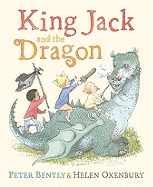
| Publisher: | Dial Books | |
| Genre: | Animals, Dragons, Unicorns & Mythical, Action & Adventure, Juvenile Fiction | |
| ISBN: | 9780803736986 | |
| Pub Date: | August 2011 | |
| Price: | $17.99 |
| Children's & Young Adult |
by Peter Bently, illust. by Helen Oxenbury
This adventure by dusk-light will quickly become a bedtime favorite. The rhythmic, rhyming language flows as a read-aloud, and the story builds suspense with each turn of the page. Jack, a confident fellow sporting a yellow paper crown and a blanket for a royal robe, leads a procession of three. King Jack, along with Sir Zack and preschooler Caspar, set out to make a "mighty great fort." The great fort rises from rudimentary materials: a giant box, sheets, sticks and "a few broken bricks" (to hold down the fort's corners). Oxenbury's (There's Going to Be a Baby) step-by-step charcoal renderings prove that nothing goes to waste in the trio's project, and a full-color illustration reveals the battlement in all its glory. "Protect your king's castle from dragon attack!" King Jack shouts.
Suddenly, they're on a battlefield of fire-breathers. As Jack and Zack do battle with wooden sword and javelin, Caspar dangles a stick toward a benign-looking dragon's tail. Oxenbury gives a nod to Maurice Sendak with her beast-filled forest, Jack's crown and the cloth-draped castle akin to Max's throne among the Wild Things. In Bently's (A Lark in the Ark) smooth merging of the boys' real and fantasy worlds, "a giant came by and went home with Sir Zack," and another giant carries Caspar away. King Jack continues his solo struggle, despite goose-pimply sound effects (like the "skitter-scurry" of a mouse). A comforting conclusion depicts the young monarch safely tucked into bed. Bently and Oxenbury prove that the imagination makes riches of the simplest ingredients. --Jennifer M. Brown, children's editor, Shelf Awareness
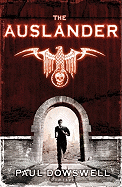
| Publisher: | Bloomsbury | |
| Genre: | Holocaust, Juvenile Fiction, Europe, Historical | |
| ISBN: | 9781599906331 | |
| Pub Date: | August 2011 | |
| Price: | $17.99 |
| Children's & Young Adult |
by Paul Dowswell
Thirteen-year-old Piotr Bruck is one of the lucky ones. Orphaned the night Poland was invaded by the Nazis, he is sent to a Warsaw orphanage where German doctors hunt for children racially pure enough to "rehabilitate." They choose Piotr as a "magnificent specimen of Nordic youth," rename him Peter and send him to Berlin. There he becomes the foster son of Professor Franz Kaltenbach of the Kaiser Wilhelm Institute for Anthropology, Human Heredity and Eugenics. Peter must join the Hitler Youth, where he reluctantly begins to absorb the ideology of the Nazi Party. Everything changes when he discovers Anna Reiter, the beautiful squad leader of the League of German Maidens, sequestered in Peter's favorite corner of the library--mocking a picture of Adolf Hitler. Together the two find the courage to join an underground movement to help hide and transport Jews and smuggle food to starving Polish workers.
Dowswell (the Adventures of Sam Witchall series) has garnered positive reviews for his historical accuracy and stirring battle scenes. He has also written many nonfiction books for children. Socially and historically accurate, The Ausländer (in German, the "foreigner") is not only a mesmerizing read but would also be an excellent discussion book in high school history classes. --Jane Henriksen Baird, public librarian in Alaska